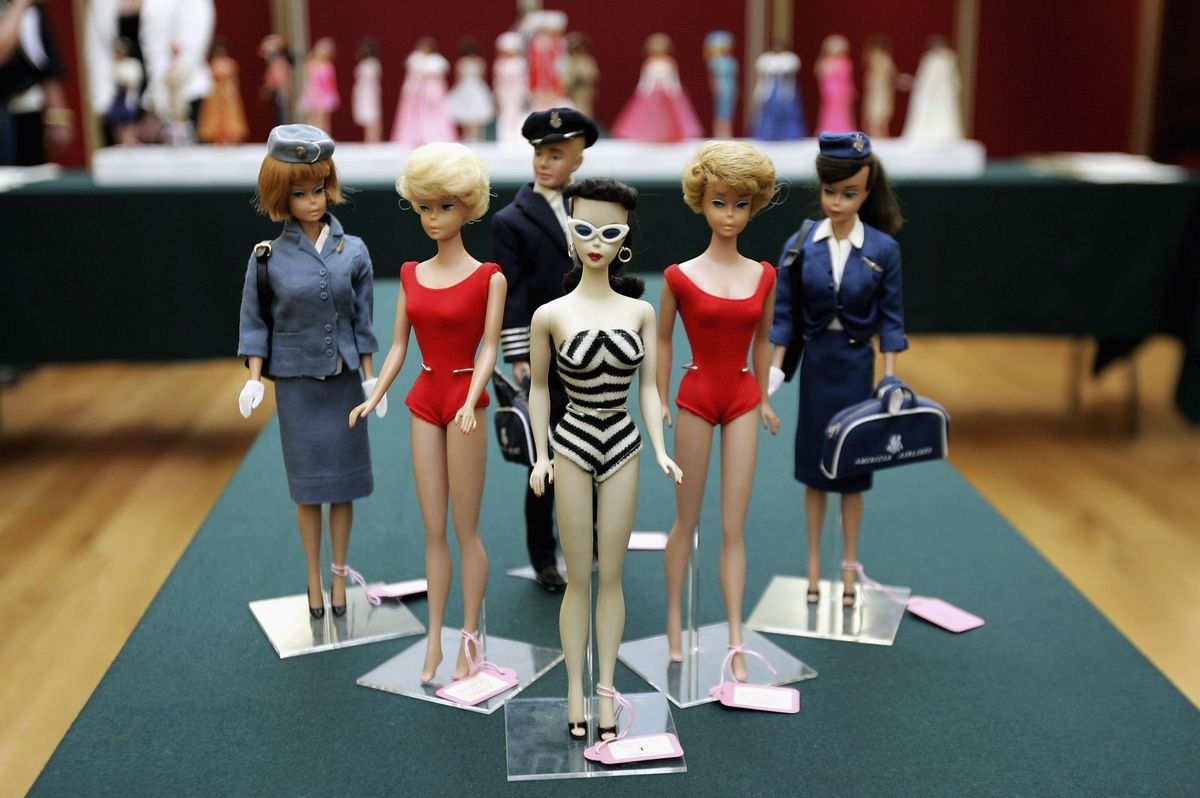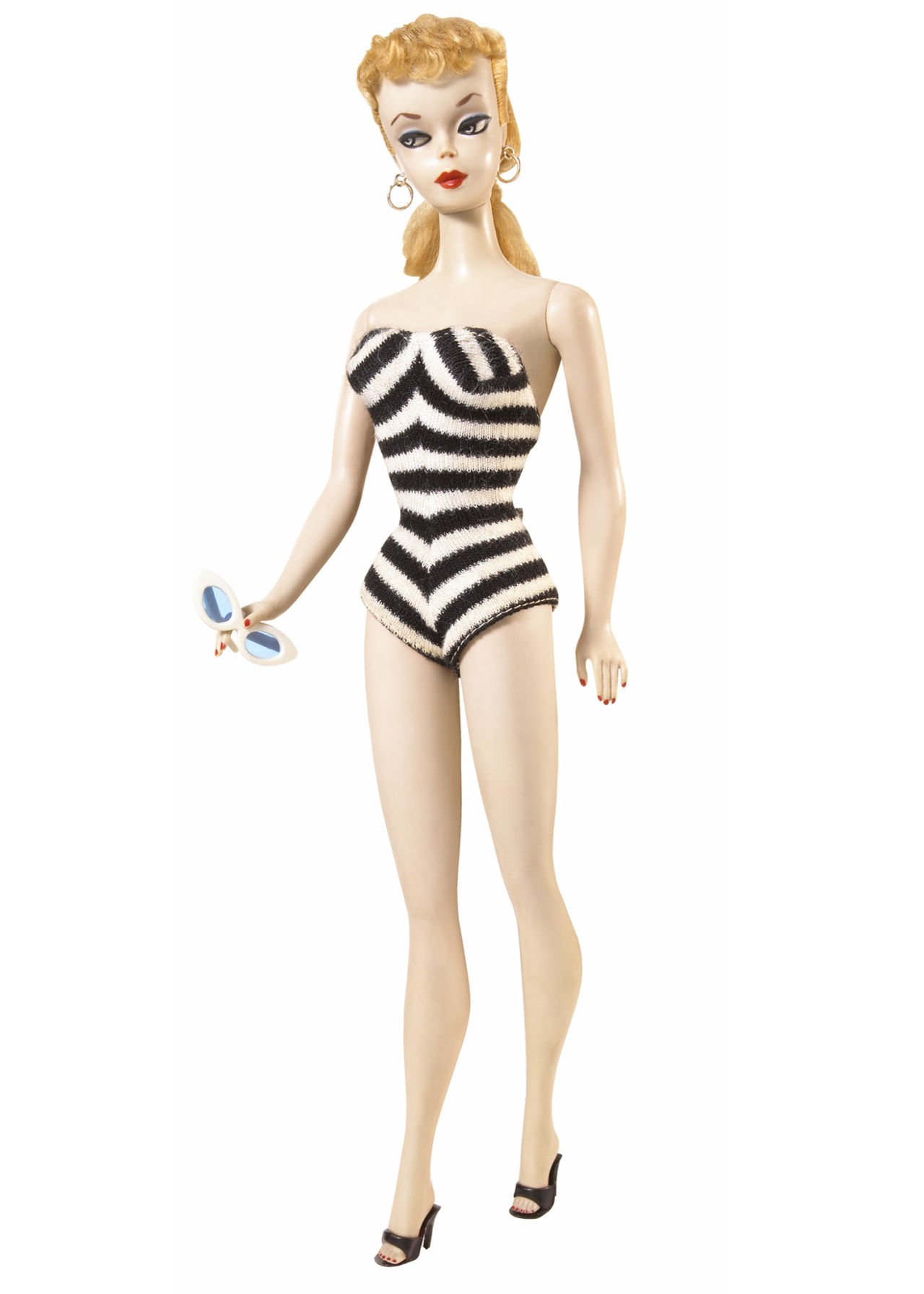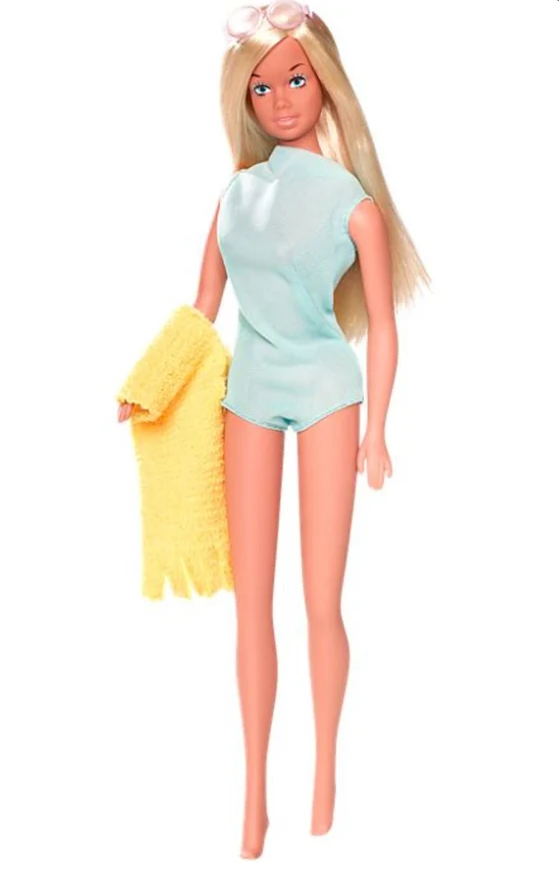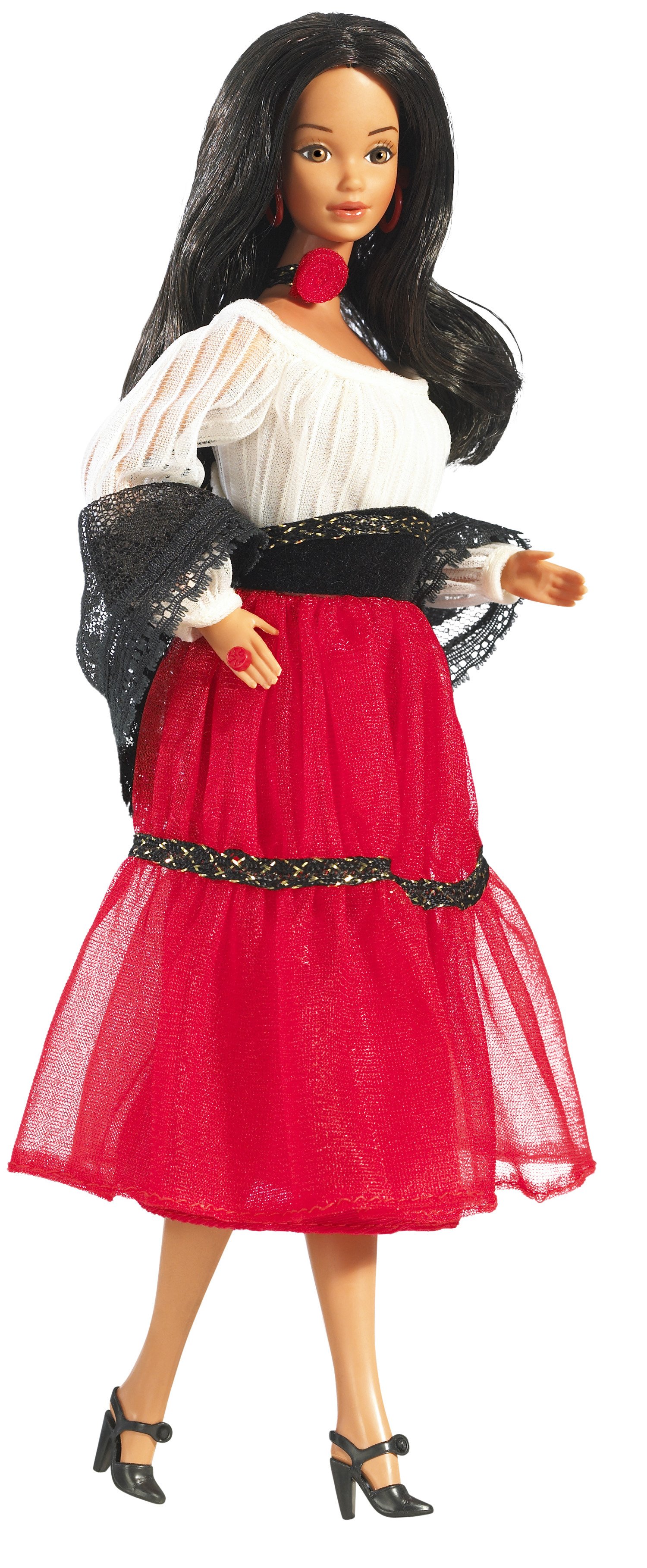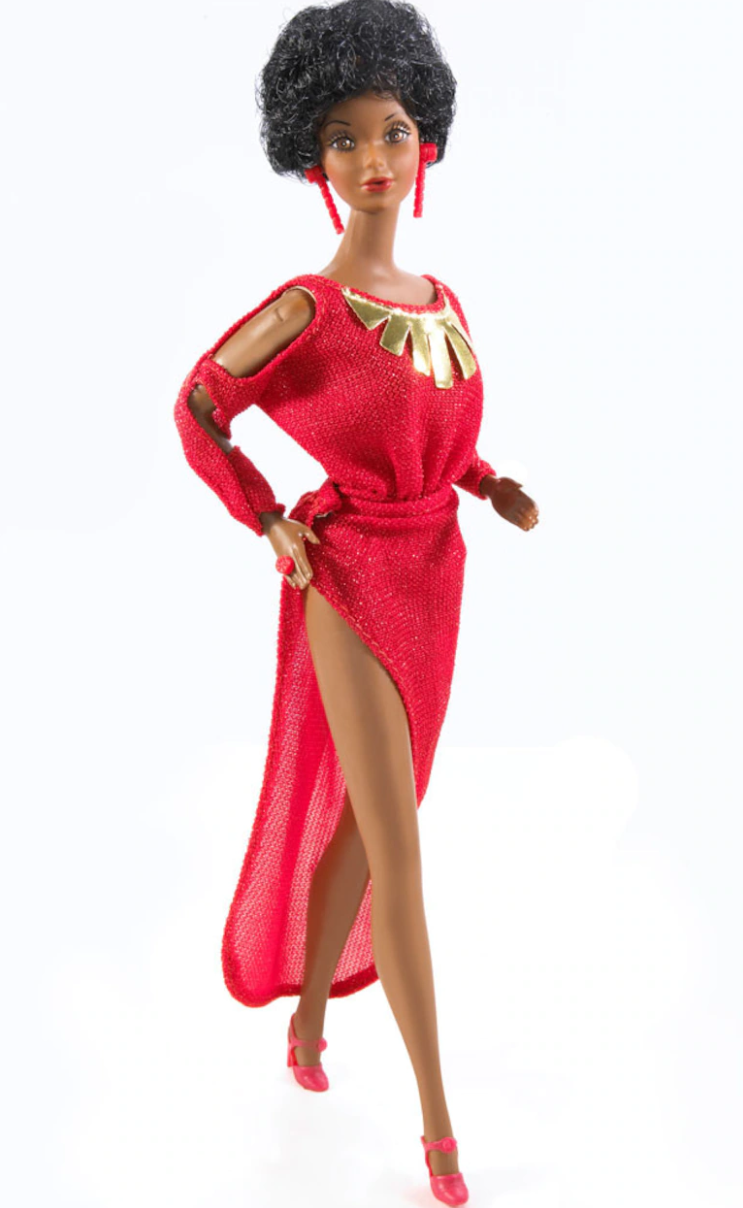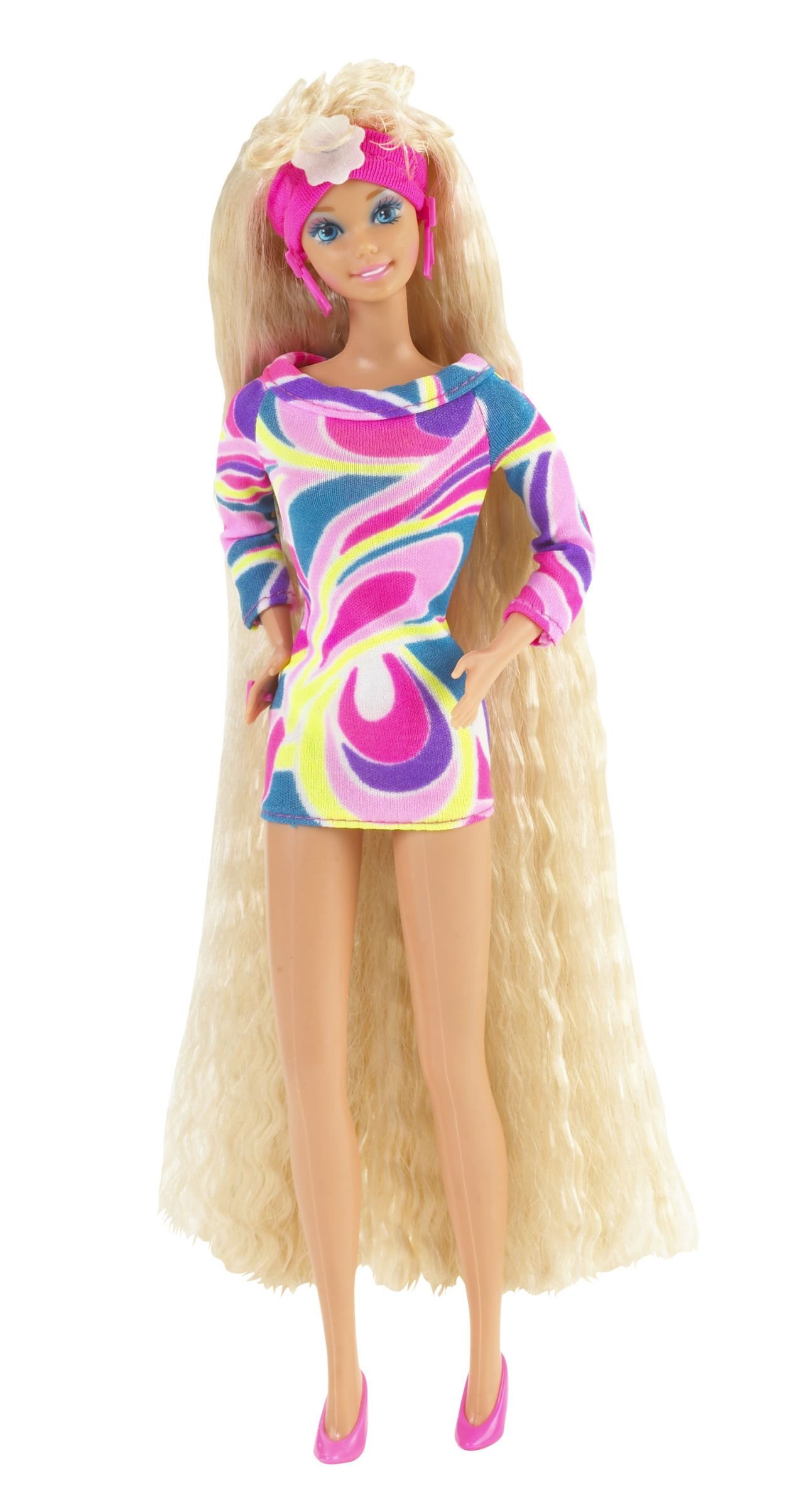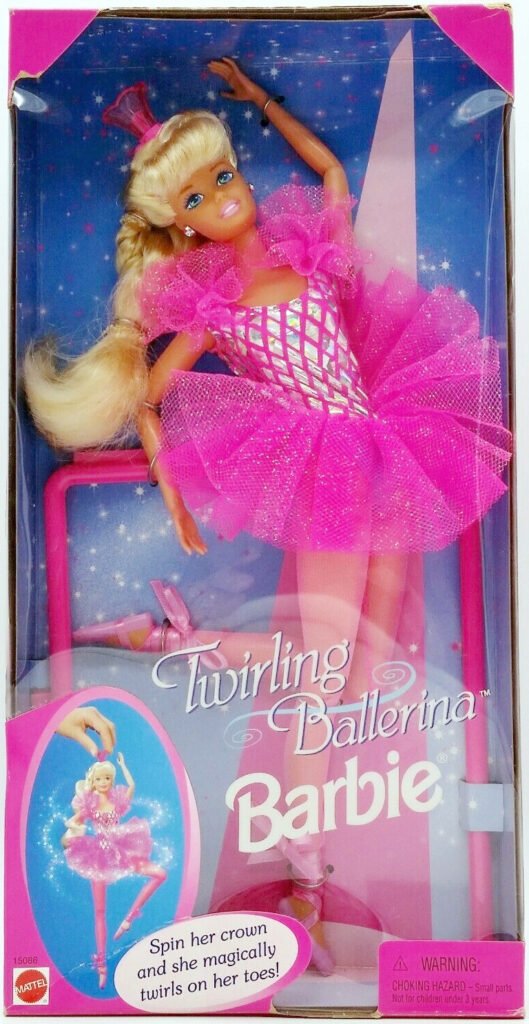The History of Barbie
By Hannah Schmidt-Rees
Yes, I get it, the Barbie movie came out and everyone’s talking about it. And myself included now, and yes, I know I’m kind of late to the Barbie party but let’s not talk about that. Better late than never, right?
I don’t think there’s one person since 1959 that hasn’t heard of Barbie. Now the epitome of the Mattel brand, Barbie has a long, influential and somewhat controversial history. So, why don’t we have a look the long life of Barbie?
Launched in March of 1959 at the New York Toy Fair, Barbara Millicent Roberts, a slim, 11-inch tall plastic doll in a striped bathing suit launched onto the American toy market. Her creator and co-owner of Mattel, Ruth Handler, found an untapped market, and created the first mass-produced doll in the US with adult features.
A Bild Lilli doll.
Now, Barbie wasn’t a completely original idea. She was directly inspired from a German doll called Bild Lilli, produced from 1955 to 1964. Bild Lilli was based on Lilli, a comic-strip character used for gag jokes by the magazine Bild. She was stereotypical, sexual and ambitious, often posed in revealing clothing and with a slick-back blonde ponytail. She was entirely created for the male market, an unrealistic standard for the male gaze. In 1953, Bild produced their own doll of Lilli, starting as a novelty toy but growing into a popular children’s toy across Europe.
Handler & Mattel created their own version, and to be honest they’re very similar. Whilst Bild Lilli was a sexual caricature, Mattel wanted to make an all-American girl, and this difference really begins to take shape as Barbie evolves. Barbie was launched in 1959, and whilst certain features were softened, early Barbie was very similar to Lilli (not going to say rip-off but they’re very similar). The original company behind Lilli attempted to sue Mattel, but eventually went bankrupt and Mattel bought the rights to Lilli in 1964.
The first showing of Barbie at the 1959 New York Toy Fair wasn’t the most successful. Initial production had to be cut by 40% due to buyers not ordering enough, as kids at the time were primarily playing with baby dolls. After airing their first commercial, the demand for Barbie drastically increased, with 350,000 dolls sold in the first year.
By 1961, Barbie had a boyfriend. By 1963, Barbie had a best friend. By 1964, Barbie had a little sister. Ken, Midge and Skipper respectively widened the range of fashion and accessories to be bought and interchanged between dolls. By 1962, Barbie had her first home (which, surprisingly, came out before women even had the opportunity to create their own bank accounts and bank loans in the US, which woefully happened 12 years later), but at least Barbie had her Dreamhouse.
The late 1960s and early 1970s led to Barbie and Ken getting their first major facelift, leading to a younger, wider-eyed and more approachable look. Barbie finally looked you in the eye, with a new face sculpt and different makeup, in addition to a tanned complexion and more casual hair – think Malibu Barbie.
The 1980s hit, and Barbie’s sales were hit hard. The 1980s was a time of an increase of women in traditionally male industries and in general, women’s rights, following the second wave of feminism in the 1970s (let’s just remember women gaining the right to open a bank account in the US in 1974). Barbie was slowly being seen as a sexist figure, representing traditional feminine and unrealistic standards. 1983 launched a new campaign for the Barbie line, using the line “We girls can do anything.”, and presenting Barbie as a professional role model, including; NASCAR driver, presidential candidate, astronaut and Olympic skier. Barbie sales grew again and led to some of the most successful Barbie’s of all time.
Another slump in Barbie sales came in the 2000s and 2010s, as the toy market widened to include close competitors (Bratz Dolls for example) and general toy trends (gaming consoles as another example). In 2016, Barbie released an inclusive range of new dolls, including hearing aids, skin conditions and disabilities. It’s clear that Barbie is attempting to change its image to become more inclusive for every child, and whilst fashion dolls will always have its place in the market, I don’t think Barbie will ever have a clear success like in its earlier years. The market has expanded, competitors are very well established, and society has changed.
Let’s go through some of the best-selling and favourite Barbies throughout her 64 years;
1959 – No.1 Barbie – The first Barbie, sporting a striped bathing suit, gold earrings, white sunglasses and black heels. Initially sold for $3, nowadays mint condition dolls sell for over $25,000. She’s simple, glamourous and full of potential.
1971 – Malibu Barbie – As I said before, this was a major redesign for Barbie. Changing Barbie to become a more relaxed & fun-loving attitude and look.
1980 – Black Barbie & Hispanic Barbie – whilst Mattel did release black ‘friends of Barbie’, this was the first Black Barbie. Mattel also released a Hispanic barbie, marking a first in inclusivity.
1985 – Day-to-Night Barbie – with the workplace revelation for women in the 1980s, Day-to-Night Barbie represented this update. This Barbie had two looks, a pink power suit that transforms into a sequined evening look.
1992 – Totally Hair Barbie – Say hello to the best-selling Barbie doll of all time. With her 1.5 inch hair and hair styling accessories, this gave kids the opportunity to fully style her hair and do whatever they want. In total more than 10 million dolls were sold in four years.
1995 – Twirling Ballerina Barbie - Now I’m only including this purely on the fact that the I owned this one as a kid and she’s got a special place in my heart. Whilst I remember her with ripped tights, messy hair and stickers peeling off from years of play, this Barbie was an important staple in my childhood, the same role she played in many other kid’s childhoods.
2009 – Barbie Fashionistas – This is less of a doll and more of a range. With 40 dolls, 11 skin tones, 7 body types and 28 hairstyles, this was the most diverse range released by Mattel, setting the standard for Mattel’s inclusive range going forward.
One of the best things about Barbie is her long history. Throughout her 64 years, Barbie has embraced, referenced and set trends for fashion and beauty. It’s a perfect capture of the aspirational fashion for the time, a representation of societal trends and expectations for women (whether good or bad). It acts like a time capsule for life, which is something that not many other toy brands have achieved. It’s a staple in many kids lives, mine included (whilst I did own more Bratz dolls than Barbie but let’s not look at the forest for the trees), and its something that has had an everlasting impact on femininity, albeit good and bad.
